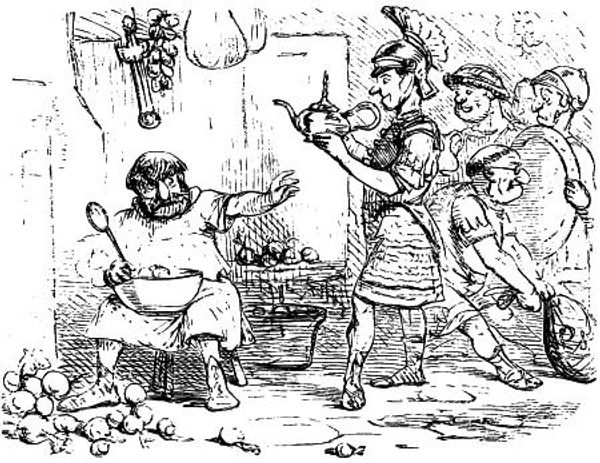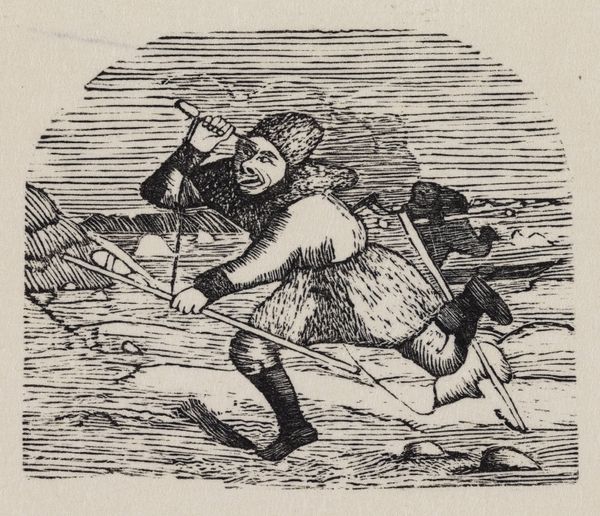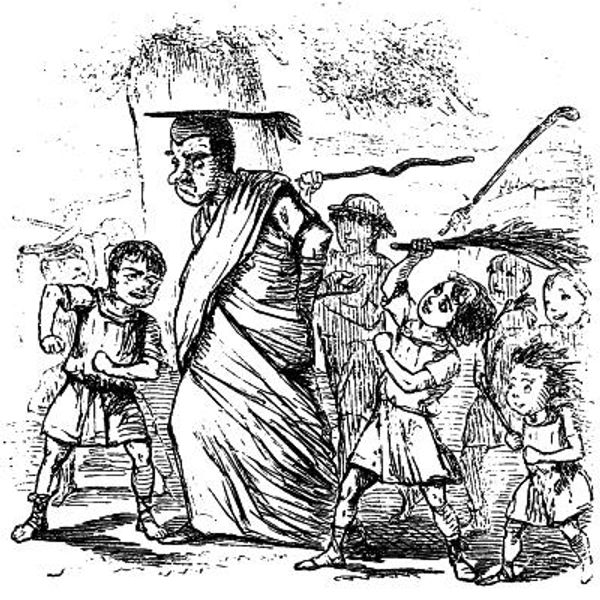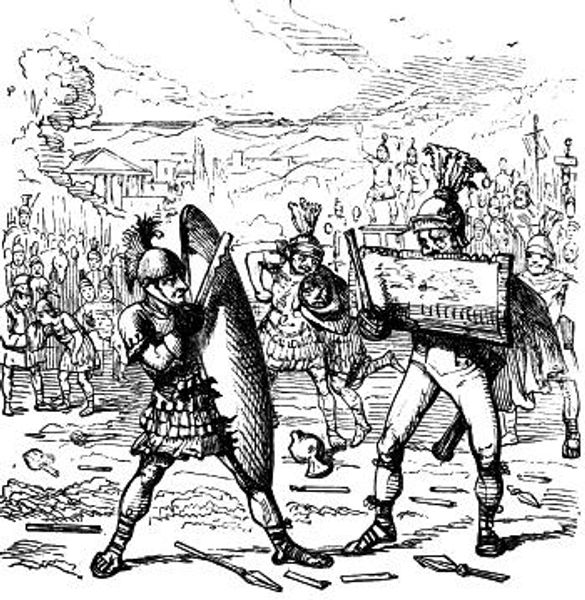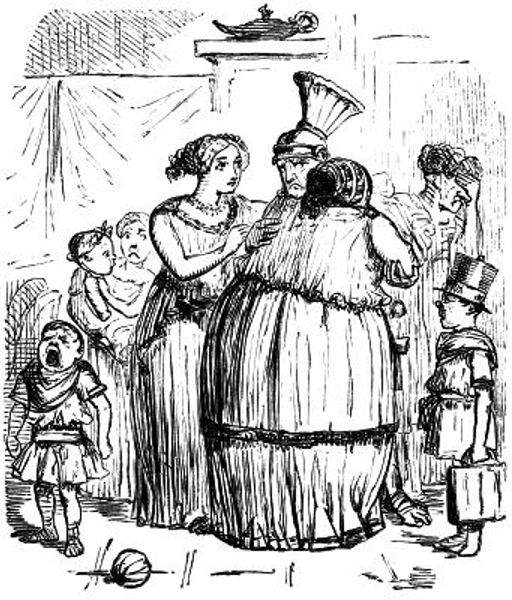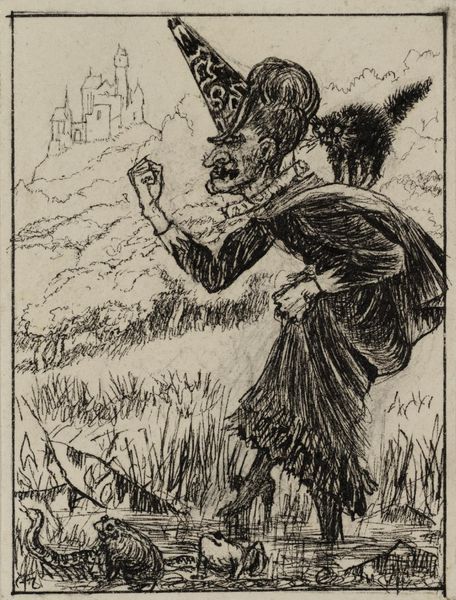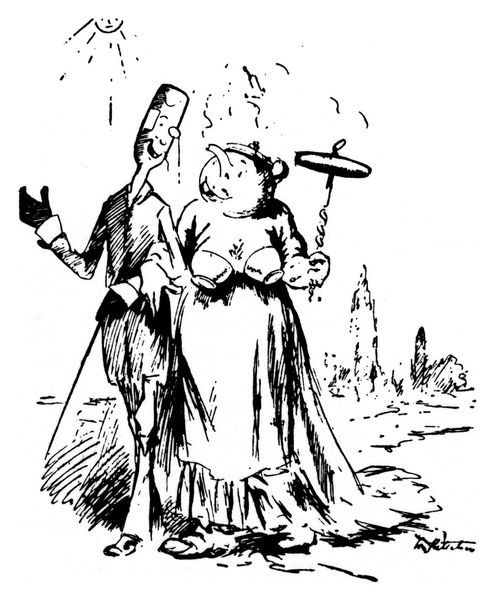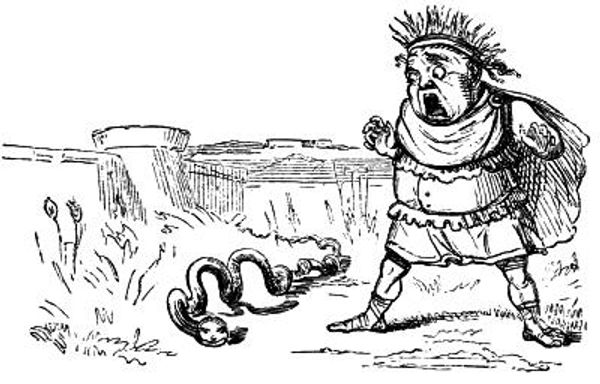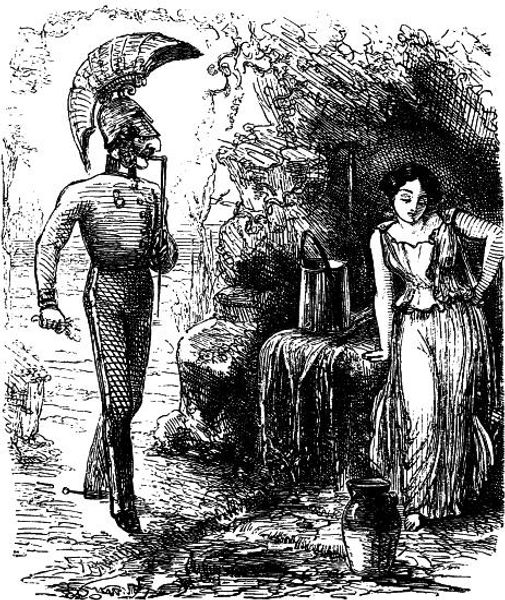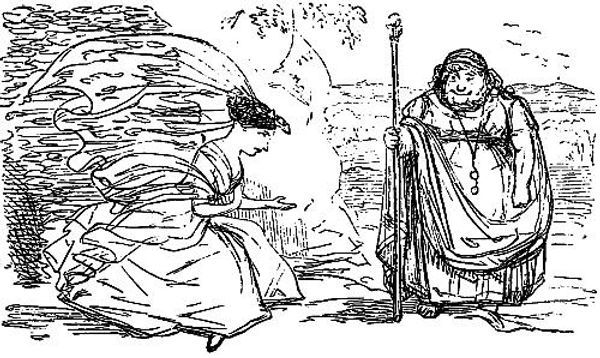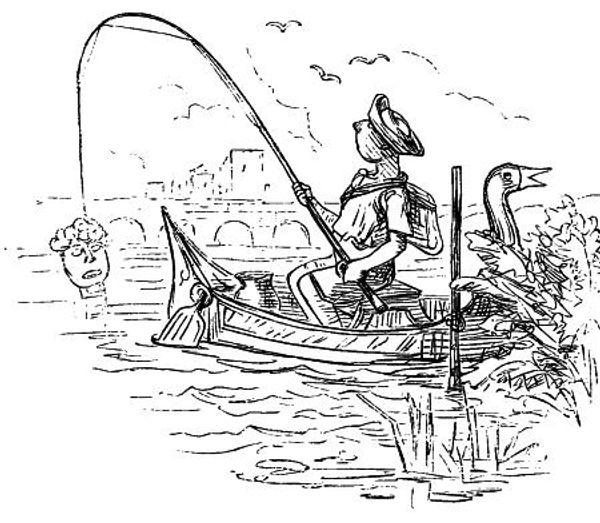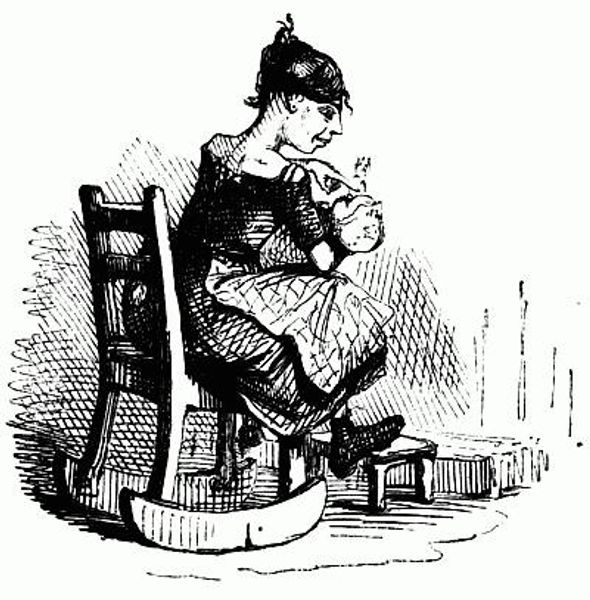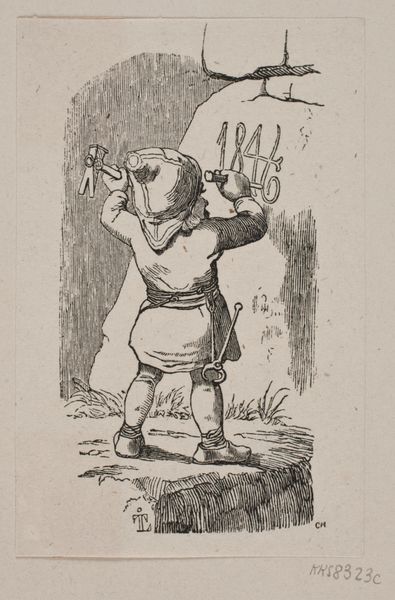
drawing, pen
#
drawing
#
narrative-art
#
caricature
#
figuration
#
pen
#
history-painting
Copyright: Public domain
Curator: Welcome! Here we have John Leech’s pen drawing, “A Scare-crow.” The piece presents a comical figure amidst what appears to be a historical setting. What's your initial take? Editor: The stark contrast immediately grabs me – it's like a playful distortion of Roman grandeur. The exaggerated features and slightly absurd posture give it an unexpectedly humorous air, a satirical edge perhaps? Curator: Absolutely. Leech was well-known for his caricatures and his ability to blend political commentary with visual wit. His medium here, simple pen strokes, belies a critical engagement with popular perceptions of power. Note the figure’s attire, the setting with SPQR banner – he’s taking on Rome itself! Editor: Precisely. Structurally, it’s quite interesting. The drawing relies on linear perspective to give depth, but the flatness of the caricature throws the classical depth into doubt. The crude hatching also lends the work a certain texture; a rough visual counterpoint to the polished, idealised forms we expect. What was the historical context informing this image? Curator: It likely reflects anxieties around Victorian imperial ambitions and how Britain perceived and fashioned itself after the Roman empire. We might consider how anxieties about industrial labour influenced this depiction of, quite literally, a scare-crow made in the form of a soldier. The drawing seems to challenge heroic narratives, reducing powerful figures to mere figures of straw. Editor: So, rather than celebrating Rome, it’s deconstructing it through sheer visual mockery? Curator: I believe so. Leech makes clear that all the trappings of power—armour, weaponry, symbolic banners—are ultimately empty if devoid of genuine substance or moral foundation. He renders Rome not as a legacy but a lesson on hollow symbolism. Editor: A powerful observation, really. Leech prompts us to examine not just the aesthetic qualities of the artwork but the very underpinnings of historical narrative. This has provided a welcome and surprisingly critical examination. Thank you! Curator: My pleasure! It underscores how close visual inspection tied to socio-historical contextualization opens many exciting perspectives.
Comments
No comments
Be the first to comment and join the conversation on the ultimate creative platform.
